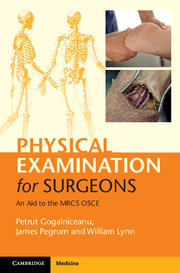Book contents
- Frontmatter
- Dedication
- Contents
- List of contributors
- Introduction
- Acknowledgments
- List of abbreviations
- Section 1 Principles of surgery
- Section 2 General surgery
- Section 3 Breast surgery
- Section 4 Pelvis and perineum
- Section 5 Orthopaedic surgery
- Section 6 Vascular surgery
- Section 7 Heart and thorax
- Section 8 Head and neck surgery
- Section 9 Neurosurgery
- Section 10 Plastic surgery
- Section 11 Surgical radiology
- 44 Principles of plain film
- 45 Chest x-ray
- 46 Abdominal x-ray
- 47 Mammogram
- 48 Facial x-ray
- 49 Cervical spine x-ray
- 50 Shoulder x-ray
- 51 Elbow x-ray
- 52 Wrist and distal forearm x-ray
- 53 Pelvis and hip x-ray
- 54 Knee x-ray
- 55 Foot and ankle x-ray
- 56 Principles of CT
- 57 Head CT
- 58 Chest CT
- 59 Abdomen CT
- 60 Aorta CT
- 61 Kidneys, ureter and bladder CT
- 62 Lower limb CT angiogram
- Section 12 Airway, trauma and critical care
- Index
59 - Abdomen CT
from Section 11 - Surgical radiology
Published online by Cambridge University Press: 05 July 2015
- Frontmatter
- Dedication
- Contents
- List of contributors
- Introduction
- Acknowledgments
- List of abbreviations
- Section 1 Principles of surgery
- Section 2 General surgery
- Section 3 Breast surgery
- Section 4 Pelvis and perineum
- Section 5 Orthopaedic surgery
- Section 6 Vascular surgery
- Section 7 Heart and thorax
- Section 8 Head and neck surgery
- Section 9 Neurosurgery
- Section 10 Plastic surgery
- Section 11 Surgical radiology
- 44 Principles of plain film
- 45 Chest x-ray
- 46 Abdominal x-ray
- 47 Mammogram
- 48 Facial x-ray
- 49 Cervical spine x-ray
- 50 Shoulder x-ray
- 51 Elbow x-ray
- 52 Wrist and distal forearm x-ray
- 53 Pelvis and hip x-ray
- 54 Knee x-ray
- 55 Foot and ankle x-ray
- 56 Principles of CT
- 57 Head CT
- 58 Chest CT
- 59 Abdomen CT
- 60 Aorta CT
- 61 Kidneys, ureter and bladder CT
- 62 Lower limb CT angiogram
- Section 12 Airway, trauma and critical care
- Index
Summary
Introduction
‘This is a post-contrast/non-contrast axial/coronal/sagittal CT of the abdomen and pelvis.’
Summary
• Life-threatening pathology
• Peritoneal cavity and abdominal wall
• Upper abdominal viscera
• Small and large bowel
• Pelvic viscera
• Retroperitoneum
• Extra-abdominal structures
Checklist: emergencies
First exclude life-threatening pathology: A3B2C1:
• 3 As
• A bdominal aortic aneurysm
• A cute pancreatitis
• Air (free air caused by perforation)
• 2 Bs
• Bowel ischemia
• Bowel obstruction
• 1 C
• Collections (free fluid, blood or abscesses).
Proceed to systematically review the abdomen and pelvis.
Checklist: systematic
Peritoneum and abdominal wall
• Free air
• Free fluid
• Collections: pelvic, subdiaphragmatic, paracolic gutters, inter-loop, lesser sac
• Abdominal wall: hernias, laparotomies, stomas, other tissue defects, surgical emphysema
Upper abdominal organs
• Liver
• Gallbladder and biliary tree
• Pancreas
• Spleen
Intestines
• Stomach and duodenum
• Small bowel
• Large bowel
• Appendix
Pelvic viscera
• Rectum and sigmoid colon
• Bladder and prostate
• Uterus and adnexae
Retroperitoneum
• Kidneys, ureters and bladder
• Aorta
Extra-abdominal checks
• Lung bases
• Bones
• Foreign objects and medical devices
Examination notes: general
What are the general principles of CT scanning?
• CT scans are normally performed with intravenous contrast, which appears white.
• Non-contrast CTs are performed in patients with renal impairment (e.g. eGFR < 45) or contrast allergies, or in CT scans that do not require contrast (e.g. CT KUB for renal calculi).
• A basic CT scan uses a venous phase, in which the veins (e.g. IVC) appear dense (‘bright’).
• Trauma or acute haemorrhage scans require an arterial phase (e.g. aorta appears dense/‘bright’) to identify contrast extravasation/active arterial bleeding.
• CT scans investigating bowel malignancy or strictures require IV and oral contrast (gastrografin). This makes the bowel look dense (‘bright’).
- Type
- Chapter
- Information
- Physical Examination for SurgeonsAn Aid to the MRCS OSCE, pp. 457 - 462Publisher: Cambridge University PressPrint publication year: 2015



